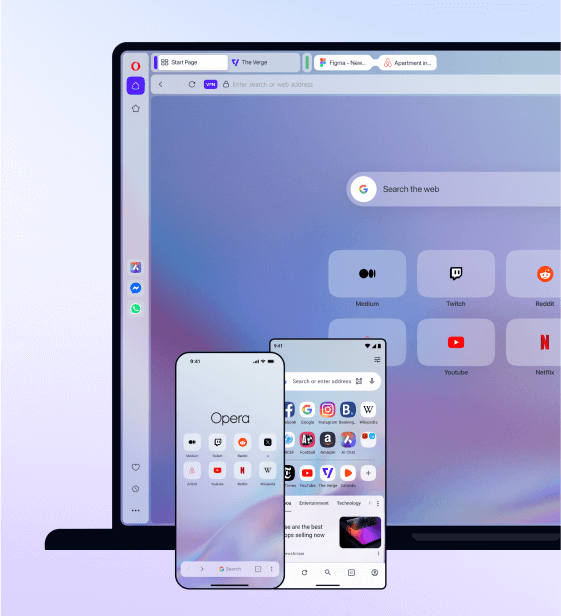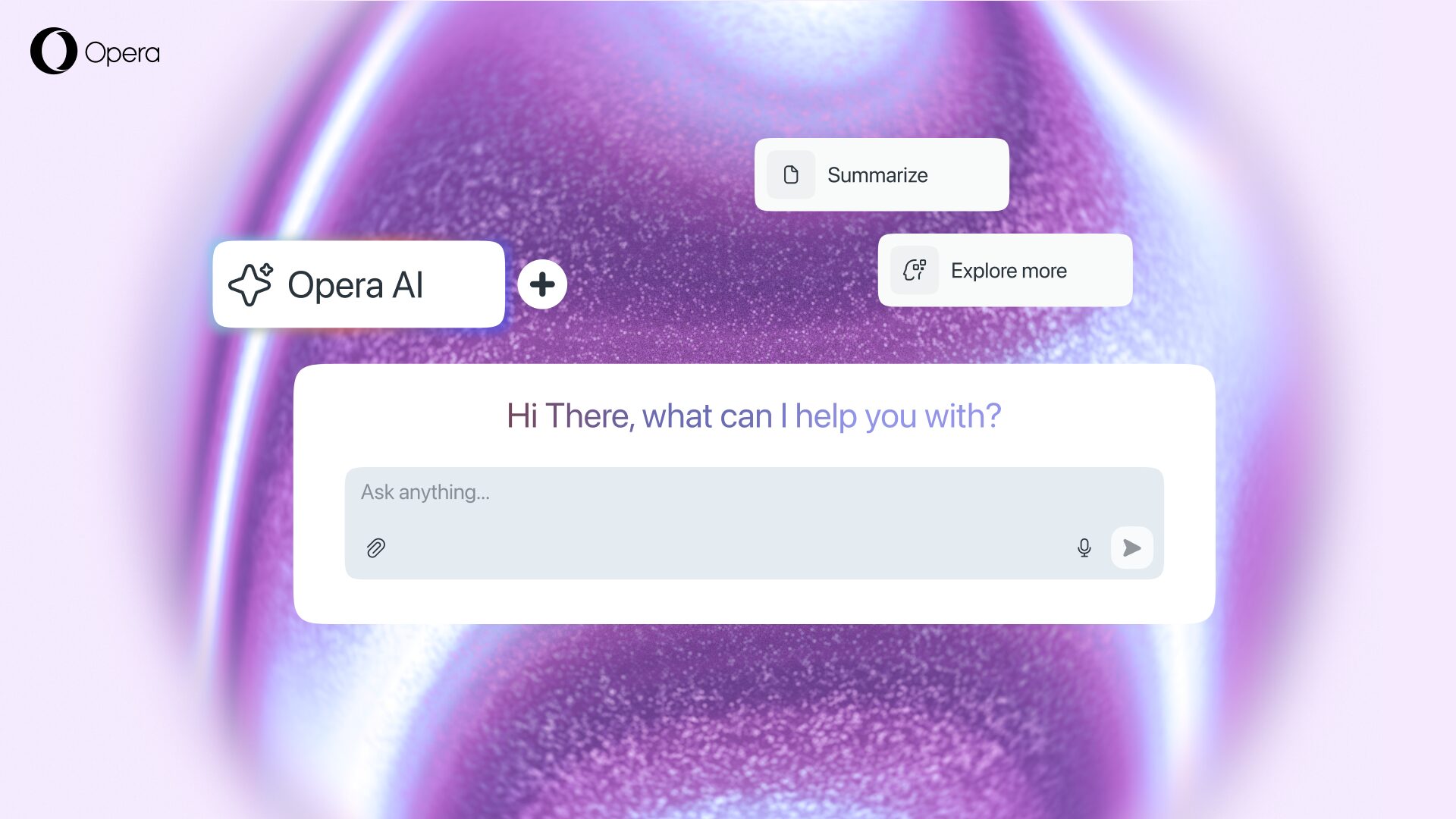Oslo is where two of the world’s browser engines were born. Let’s celebrate World Browser Day

Opera’s former CTO and one of the web’s founding fathers, Håkon Wium Lie, proposes World Wide Browser Day in an interview and unveils a commemorative plaque at the location of the first Opera HQ in Oslo.
Presto and WebKit celebrated on October 16,
World Wide Browser Day
On October 16, a blue historical plaque will be added to an office building in Oslo, celebrating its key role in the history of the web. This building was home to not one, but two of the rendering engines which empower web browsers. Håkon Wium Lie, who served as Opera’s CTO for 18 years, took the initiative to add the historical marker. We asked him some questions.

Why is this building in Oslo so important for the web?
Waldemar Thranes gate 98 was home to not just one, but two of the rendering engines that power our browsers. In the history of the web, Geneva is the birthplace, Urbana–Champaign is the kindergarten, and Oslo is the racetrack where two ultra-fast competing rendering engines were developed. Opera developed Presto there, which enabled Opera to put browsers into mobile phones, TVs and kitchen sinks. It’s also the site where the neighboring company, TrollTech, developed the groundbreaking Qt tool, with one of its employees spearheading the KHTML engine. This engine was later renamed by Apple to WebKit. Together, Presto and WebKit made the internet possible on mobile devices.
Breathtaking. When did it all start?
Opera moved into the building in 1998. On a web timescale, this is very early. Opera’s main product then was a browser that fit on a floppy disk – it was much smaller and faster than competing browsers from Netscape and Microsoft. Oslo is in Scandinavia, and in the neighboring countries, Nokia and Ericsson started the development of mobile devices in which a browser was a key component. Opera’s code was small enough to fit into Nokia’s Communicator and Ericsson’s P800. This opened up the door to a mobile revolution which has been changing our lives ever since.
TrollTech’s main product was a development tool called Qt. Cute name, no? For Qt, the browser was a component. One of its employees, Lars Knoll, was active in the development of KHTML, and TrollTech chose to use KHTML as the browser component. The KHTML grew from being Lars’ spare-time project to becoming the WebKit code base on which Apple and Google built their own browsers. I don’t think building a rendering engine was in TrollTech’s business plan but the project had a fundamental impact on the web.
In 2013, Opera switched to WebKit and Microsoft announced their switch in 2018. This means it is now used by all the major browsers except Mozilla Firefox.
Why aren’t there more rendering engines?
The answer is simple. It’s hard work to write and maintain the code. Your own rendering engine will probably act slightly differently from WebKit, and web developers may see this as bugs.
That being said, there are several benefits to having multiple rendering engines. Competition is always good, and it’s helpful to verify (say) CSS specifications by having several interoperable implementations.
I’m the chairman of the board of YesLogic, the company which makes the Prince HTML to PDF formatter. The single-digit technical team in Melbourne has implemented their own rendering engine and they have no plans to replace it. So, it is possible, and even fun to build your own engine.
Does anyone still use the Presto rendering engine?
Presto still runs on many mobile phones and TV sets. But the rendering engine is not being developed further since Opera switched to WebKit. By that time, WebKit was just as fast and standards-compliant as Presto, and the somewhat smaller footprint of Presto was not important enough to most users. It made more sense for our programmers to contribute to an open source project.
Things might have been different had we opened the Presto source code earlier. Perhaps Apple would have used Presto instead?
Back to the building, Why did it all happen here?
First of all, it was cheap. Oslo is an expensive city and this drab and uninspired building offered low rent to startups. The area is attractive, though. It’s within walking distance of downtown, and Opera and TrollTech programmers liked living in the nearby historical neighborhood, Grünerløkka.
Did you occupy the building alone?
The first years we spent there, the tenant on the 4th floor was a store with, ahem, a rich selection of porn magazines. Opera was on the 5th floor but visitors sometimes mixed up the entrances. Or pretended to mix up entrances. That was an icebreaker in formal meetings with large corporations.
What else do you remember from the early days?
Opera moved into the building in 1998, a few months before I joined. When I arrived, there were ten or so employees in a big space with room for many more. Geir Ivarsøy and Karl Anders Øygard were the main brains behind the Presto rendering engine. I pushed for more and better support for web standards. As a result, the binary size of the Opera executable grew slightly, beyond what could fit on a floppy. The early slogan fits on a floppy had to be changed to almost fits on a floppy, which doesn’t have the same ring to it.
The company was geared for growth and we rapidly hired talented programmers for the Presto team, including Rune Lillesveen and Morten Stenshorne. When Opera switched to WebKit in 2012, they were shepherds along the way. They are continuing work on the WebKit codebase today, even if it’s now called Blink and their employer is Google. Metaphorically and physically speaking, they sit downstream from the Opera building.
In addition to programmers, a company also needs staff for sales, marketing, and accounting. And they all need a good lunch to stay productive. Anne Christiansen became the office manager and took on the task of building a kitchen to serve lunch. The kitchen workers were all hired as Opera employees, as were janitors and other support staff. It was a wonderful time when we all felt we were contributing to build better browsers for a better world.
Why Oslo? Could this development have happened anywhere else?
Most internet giants are based on the US West Coast. The fact that two of the foremost rendering engines have their roots in Oslo is an exception to the rule. It happened here due to some very smart and stubborn programmers, combined with a tech-friendly society, some venture capitalists and a bit of luck.
Thanks to the internet, we were able to reach many more customers, as such we helped fuel our own future. This effect is even stronger today and you can see internet startups everywhere.
That being said, Oslo has a flourishing startup scene. I’m especially proud of Huddly and Remarkable which make truly interesting devices. I must also add that I’m an early investor in those companies.
You refer to the buildings as drab, which is not a complement. Did the drabness of the building impact your code?
The building was built in 1939, a few years after architects in Norway (and many other places) turned away from traditional building methods towards a functionalist right-angle approach with striped windows. Personally, I prefer more traditional buildings which tend to embellish the spaces they occupy rather than degrade them. One amusing example of such structures is the rooftop smoking shed which was built in 2003. The carpenter made a sensible choice to have a traditional gable roof. It towered beautifully on top of the building, as can be seen in the first two pictures:




In the second picture, you can also see the entrance to the Peugeot car dealership which was there before hi-tech moved in. In the fourth picture, you see our backyard, as well as the charming areas with wooden houses to the north. There are several such historical areas in the neighborhood – you can walk in any direction from that office building and find lively and beautiful neighborhoods.
The aesthetic aspect plays an important part in our lives. Which brings us to Cascading Style Sheets, which are your baby. Was CSS also developed in that building?
I first developed CSS while working with Tim Berners-Lee at CERN. Then, working with Bert Bos at W3C, CSS was developed into a specification in 1996. From then on we tried to have browser vendors implement CSS correctly. Netscape and Microsoft both said they would do it, but dragged their feet. Then Opera came along and in three months Geir Ivarsøy, one Opera’s founders, implemented CSS to a level which allowed Opera to surpass the other browsers. At that point I decided to move back to Norway to join Opera as CTO.
A year or so later, I hosted a meeting for the W3C’s CSS working group. In the pictures below you can see Bert Bos, Eric Meyer, Tantek Çelik, Chris Lilley, and Ian Hickson. They all contributed massively to the CSS specifications and implementations.




The last picture is from the backyard party in 2000 when Opera, TrollTech, and Linpro – a linux-based startup which also worked in the building – organized a party. It coincided with the CSS Working Group meeting, so everyone joined in. In the last picture you can see Microsoft’s Tantek Celik and Opera’s co-founder Jon Stephenson von Tetzchner.
Is it true that Opera also used the building in its marketing?
Kind of, in a tongue-in-cheek way. The slogan Ugly building. Beautiful browser was placed on the pavement outside the building, along with (in translation) Small thinking (5MB) is ok in a tiny country. Here are some pictures:




Is is possible to visit the building today?
The building is no longer home to Opera or TrollTech. After being listed on the Oslo stock exchange, both companies found new owners – and new premises. I do not know the current tenants, and I have not been inside since Opera left the building. A sense of loss would naturally occur, so I prefer to stay outside with the plaque.
Seeing the building is quite easy if you are in Oslo. Type 98 Waldemar Thrane into you phone and guidance will be provided. Fun fact: Some of the code in your phone is most likely written by people who worked in that building.
The street is also famous for its hot-dog stand: Syverkiosken, a hole in the wall with street art around it. It serves delicious hot dogs with many kinds of toppings. Try the lingonberry!
A treat for web tourists who come to visit?
Indeed! After unveiling the plaque on Wednesday, we’ll celebrate there. If you’re in Oslo, join us. If you’re not, let’s celebrate a World Wide Browser Day virtually. I hereby propose making October 16 a worldwide browser celebration day!














